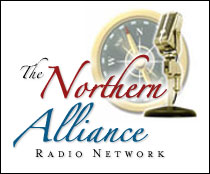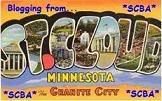Tuesday, March 31, 2009
The three influences on the money supply, or, why inflation lurks
The banking system can increase or decrease the money stock, but there is nothing unique about this power. Any holder of money balances can produce effects on the money stock similar to those produced by banks (though not through creation or extinction of deposits). When banks reduce their holdings of high-powered money by making loans and thereby reduce their reserve ratio, they increase the money stock; but the public also increases the money stock (eventually) when it reduces its holdings of high-powered money in relation to deposits (assuming banks maintain the same reserve ratio). Changes the currency-money and reserve-deposit ratios, therefore, have similar effects on the money stock, though they represent high-powered balances in relation to deposits of two different sectors, the banks and the public, which view deposits differently-banks, as a liability, and the public, as an asset. The two ratios are nevertheless separated in the analysis to follow, because they behave in different ways.From a very old essay by Philip Cagan. Many people want to wonder how it is that we can print as much money as we have and how it could not lead to inflation, and why we might have deflation. The answer comes in distinguishing monetary base from the money supply.
Monetary base or "high-powered money" (as we used to call it) is measured by the liabilities of the Federal Reserve. Jim Hamilton over the weekend had two posts highlighting how the Fed's activities in extending credit to all and sundry has exploded the balance sheet of the Fed. He asks at the end of the first post "Does the explosive growth of the monetary base ... imply uncontrollable inflationary pressures? My answer: not yet, but stay tuned." That takes us to the second post where he argues the Fed has hamstrung itself in creating these new lending facilities and tripling its liabilities.
Sure, but the fact remains that the relationship is between money supply and inflation or deflation, not monetary base. To get from one to the other you have to look at the other two routes that Cagan identifies. Both the public and the banks can demand monetary base and keep it, rather than have it create money. Indeed, the process of, for example, American citizens withdrawing deposits and sticking the resulting cash in the mattresses of their beds would destroy money created by deposit expansion. Since at least half of our currency is held overseas (largely by private citizens as a store of value), instability in those countries increases the demand for base money. Interestingly in this recession, so far we have not seen a run for currency -- the ratio of currency to deposits has remained relatively stable over the last two years.
Likewise, banks can decide to hold reserves against their deposits in greater proportion during times of turbulence. Particularly beginning in fall when the ability of banks to attract overnight loans was damaged in the credit crunch, banks relied on the old fashioned means of putting cash away in the vault or on deposit at the Fed (it's too soon to say whether the Fed's decision to pay interest on deposits has had any impact on this.)
We write about the wall of monetary base as if it is an excess supply of bank reserves; it's almost certainly not in the present environment. When it is, only then can it be inflationary. We can, of course, use government force to increase the demand for base money -- for instance, by reimposing reserve requirements on time deposits -- and limit inflation this way. We normally don't use reserve requirements for monetary policy only because it's a blunt, powerful tool. Yet it wouldn't be out of line to use it as part of a solution. (I doubt this would be news to the Bernanke Fed, btw.)
The public's demand for money has also increased, as shown by the decrease in the velocity of money (the inverse of which is the share of one's income one is holding as money.) I show here both M1 and M2 velocity, using personal income as a representation of GDP.
People in uncertain times want to hold on to money relative to other assets, and once again, inflation is the result of an excess supply of money. Our fears of inflation imply that the increased demand for reserves (by banks) and money (by the public) are temporary phenomena, bound to reverse in more normal times that are in the offing. I'm not sure why we believe this to be true. The disappearance of some asset classes, and the increased perception of risk in many others, would lead to a rise in the demand for money in almost any standard view of economics. Maybe that perception reverses quickly, but maybe not. High inflation isn't a problem until it does.
This does not deny Hamilton's last point in his second post, that the Fed has cost itself both maneuverability and credibility in its mission to fight inflation. But I would disagree with Hamilton that it's the Fed's primary mission. The Fed does not have the sole goal of price stability. We might wish it did -- I certainly have in years past -- but I do agree with Robert Gay's assessment in this Bloomberg podcast with Tom Keene last week that the Fed has two modes -- normal mode, in which price stability is its primary function, and crisis mode, where "inflation be damned, it's battle stations people!" Unless the Congress changes the rules and removes the lender-of-last-resort function from the Fed, it will always have those two modes.
Labels: economics, Federal Reserve









